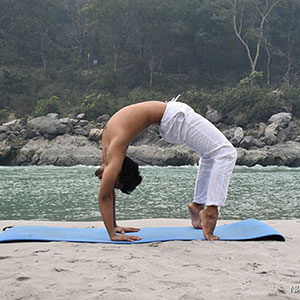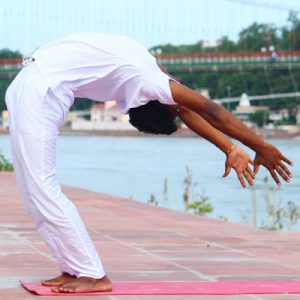Do you want a deep, serene accord and harmony to gradually infuse into every single area of your life? Well, start meditating then. Yes! Billions of people meditate and more than a few successful individuals attribute a part of their achievement to meditation.
What is meditation?
You may perhaps consider meditation to be a devotion or prayer. But is it so? No.
Then what is meditation all about?
Meditation is not a practice but it is a way of life. Meditation means ‘a termination of your thought process’. In all conscience, meditation means consciousness, when your mind becomes free of dispersed thoughts and numerous patterns. Whatsoever you do with consciousness is meditation. “Observing your breath” is a form of meditation; “hanging on to what birds sing” is meditation. As long as these undertakings are free from any interruption to the mind, it is meditation.
Benefits of meditation
So the next time you brush aside and shut down and let yourself thaw out, remind yourself of all the welfares of meditation.
-
- Better Immunity
Meditation seems to boost your immunity while reducing the risk of breast cancer.
- Better Immunity
-
- Emotional Balance
Meditation is surely the way to treat the neurotic behaviour and unhealthy emotional conditions.
- Emotional Balance
-
- Increased Fertility
Females are more probable to conceive through periods when they are relaxed rather than worried. Likewise, stress decreases sperm count as well as motility. As a result, meditation may perhaps boost male fertility as well.
- Increased Fertility
-
- Dismisses Irritable Bowel Syndrome
Performing a relaxation meditation two times every day may help you reduce the signs of bloating, diarrhoea as well as constipation.
- Dismisses Irritable Bowel Syndrome
-
- Drops Blood Pressure
Meditation may help you take your blood pressure down by making your body less reactive to stress hormones.
- Drops Blood Pressure
- Anti-Inflammatory
Meditation can help inhibit and cure symptoms associated with heart disease, asthma, arthritis, as well as skin disorders like psoriasis by turning out the stress response.
Types of meditation
To be precise, meditation can be classified into seven categories.
-
- Transcendental Meditation (TM)
The objective of Transcendental Meditation is to attain the state of enlightenment. It lets you experience that internal serenity, that discreet condition of least excitation, even when we are full of activity.
- Transcendental Meditation (TM)
-
- Heart Rhythm Meditation (HRM)
Heart Rhythm Meditation centres your energy on developing the application of awareness. This type of meditation focuses principally on the soul, with a stress on your breath. It is a triple-treat kind of meditation as it lets experience physical, emotional, and mystical benefits.
- Heart Rhythm Meditation (HRM)
-
- Kundalini
Kundalini emphasizes on the growing stream of energy. This type of meditation has its origins in both Buddhist as well as Hindu teachings. To experience this energy the person needs to focus on the breathing as it drifts over the energy centres in your body.
- Kundalini
-
- Guided Visualization
Guided visualization can be used for divine healing, stress release as well as personal development. By picturing calming and positive experiences, the body will react by discharging chemicals that produce feelings of positivity.
- Guided Visualization
-
- Qi Gong
Qi Gong may help you improve your posture, breathing, as well as the ability to unwind with ease. It is one of the most ancient types of meditation that originates from earliest Chinese society.
- Qi Gong
-
- Zazen
Zazen is the soul of Zen Buddhist practice and transforms to “seated meditation.” This technique is the easiest to take part in as it depends on self-guidance. Breathing is an indispensable component of Zazen and it lets the breath deepen and enrich the experience.
- Zazen
- Mindfulness
Mindfulness is all about recognizing the reality by allowing the mind to wander, accepting any feelings that turn up, as well as understanding the present. It is done by sitting with eyes closed, legs crossed, the back straight, while placing all attention on breathing in and out.
Meditation time and frequency
In general, 10 minutes a day, every single day of the week is far more helpful than 70 minutes on one day of the week. This approach would help you find the stability of consciousness in your day-to-day lives; rather than just secluded meditations practice that you perform and leave behind.
How to meditate?
Here are simple, yet pretty effective steps to attain a deeper meditation experience:
-
- Make a Sankalpa.
Sankalpa is a Sanskrit term that denotes the deepest desire, a sincere promise, an intention, or a resolution to do something. This word comes from the Sanskrit origins where “san” refers to “an association with the highest truth,” and kalpa refers to “promise.” Therefore, the Sankalpa signifies an affirming resolution to do something or attain something divine. Make a firm resolution ( Sankalpa ) that “I will meditate for next x number minutes”. By and by You will enjoy these moments of stillness and continue sit for longer time.
- Make a Sankalpa.
-
- Choose your mantra.
A mantra is a term or expression that you repeat to yourself without a sound all through the meditation. The objective of the mantra is to provide you something to put your thoughtfulness on other than your feelings and thoughts.
- Choose your mantra.
-
- Find a relaxed place to sit.
It’s best to find a relaxed place where you won’t be troubled. You don’t need to sit cross-legged on the ground except if that is comfortable for you. Instead, your goal should be to sit as erect as possible while still remaining relaxed.
- Find a relaxed place to sit.
-
- Close your eyes and take deep breaths.
Take some “cleansing breaths” by breathing in bit by bit through your nose and then letting your breath out of your mouth. Well along, carry on breathing at a usual speed through your nose with your lips closed softly. Mind will wander but try to refocus the mind and bring it back to the object of meditation. Get rid of the futile thoughts immediately but gently.
- Close your eyes and take deep breaths.
-
- Repeat your mantra without a sound without moving your tongue or lips.
Repeat your mantra gently and mildly. You must not force it. The repetition of mantra must be natural and effortless. At times, it is better to imagine that instead of resaying the mantra to yourself, you are listening to it as if it is being whispered in your ear.
- Repeat your mantra without a sound without moving your tongue or lips.
-
- Do not try to stop your thoughts.
It is human nature for the brain to wander and get lost in thoughts. Do not try to empty your mind or stop your thoughts. Every time you become conscious that your attention has wandered away from your mantra to your thoughts or any other disruptions, just return to repeating the mantra wordlessly.
- Do not try to stop your thoughts.
- End repeating the mantra.
After around 20 minutes, you can end repeating your mantra and carry on while sitting with your eyes closed. Make sure to spend some moments relaxing with your eyes closed before picking up where you left off.
So Practice Meditation to Become a Pro
“My mind never stops thinking. It flutters all over the place! I can’t meditate. I just can’t!” Sound familiar? Well, nail down that practice makes a person perfect. It’s an old saying we all know pretty well, right? Well, it works pretty well in the context of meditation as well. With this in mind, dredge up that great things have little beginnings. Your day-to-day pains are expected to yield more over the long-term that you would ever envision.






